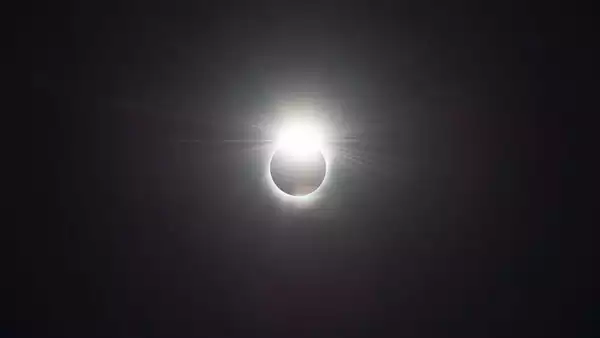“Witnessing the Celestial Drama”
Introduction
The cosmos is preparing for a spectacular event that promises to captivate skywatchers across North America. On April 8, 2024, a celestial ballet will unfold—a total solar eclipse. As the Moon gracefully glides between the Sun and Earth, it will momentarily plunge parts of our planet into darkness, leaving us in awe of the cosmic choreography.
What Is a Total Solar Eclipse?
A total solar eclipse occurs when the Moon aligns perfectly with the Sun, casting its shadow upon Earth. For a brief moment, the Sun’s brilliant face is obscured, replaced by the eerie glow of the solar corona—the Sun’s outer atmosphere. The sky darkens, birds fall silent, and the temperature drops. It’s as if nature itself holds its breath.
The Path of Totality
The eclipse’s path of totality—an ethereal ribbon—will sweep across Mexico, the United States, and Canada. Imagine standing on Mexico’s Pacific coast, gazing upward as the Moon’s shadow races toward you. At approximately 11:07 a.m. PDT, the Sun will vanish behind the Moon, revealing the corona in all its splendor. From there, the shadow will traverse the continent, leaving a trail of awe-struck observers in its wake.
Where to Witness the Eclipse
- Mexico: The Pacific coast of Mexico will witness the eclipse’s first totality. Grab your solar glasses and prepare for a celestial spectacle.
- United States: Cities like Dallas, Indianapolis, Cleveland, and Buffalo will experience varying degrees of eclipse coverage. Check local times and locations to find the best viewing spots.
- Canada: Lucky Canadians in cities like Montreal, Toronto, and Halifax will witness a partial eclipse. Even a sliver of the Sun’s brilliance is worth celebrating.

Safety First
Remember, never look directly at the Sun during an eclipse without proper eye protection. Solar glasses or a pinhole projector are essential for safe viewing. Share this experience with friends and family, and let the wonder of the cosmos unite us all.
Conclusion
As the Moon dances with the Sun, let’s embrace the magic of the 2024 total solar eclipse. Whether you’re a seasoned astronomer or a curious sky enthusiast, mark your calendars and prepare to be spellbound by the cosmic spectacle above.
Happy stargazing! 🌟🌒🌞
